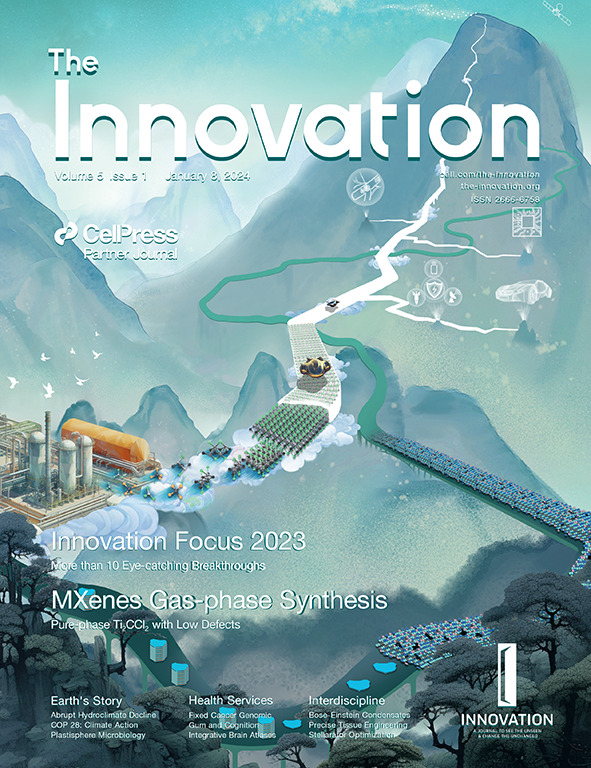Geological context of the Chang’e-6 landing area and implications for sample analysis
IF 33.2
1区 综合性期刊
Q1 MULTIDISCIPLINARY SCIENCES
引用次数: 0
Abstract
Research on returned samples can provide ground truth for the study of the geological evolution history of the Moon. However, previous missions all collected samples from the near side of the Moon, which is significantly different from the far side of the Moon in terms of the thickness of the lunar crust, magma activity, and composition. Therefore, the samples from the far side of the Moon are of great significance for a comprehensive understanding of the history of the Moon. China’s Chang’e-6 (CE-6) probe has successfully landed on the lunar far side and will return samples in the coming days. With the precise location of the CE-6 landing site, a detailed analysis of the geological background is conducted in this research. The landing site of CE-6 is within the Apollo crater, which is inside the largest impact basin on the Moon, i.e., the South Pole-Aitken (SPA) basin. According to the numerical simulation of the formation process of the SPA basin, CE-6 landed at the edge of the SPA impact melting zone, which is presumably composed of impact melt of the lunar mantle. The Apollo crater subsequently excavated deep material again, which constitutes the basement of the CE-6 landing area. Later, erupted basalt covered these basement rocks, and they also constitute the main source of the CE-6 samples. Based on the dating method of crater size-frequency distribution, we find that the basalt is ∼2.50 Ga. The CE-6 samples also possibly contain basement rocks as excavated and ejected by craters, and they can provide crucial information for our understanding of lunar geological history along with the basalt samples.嫦娥六号着陆区的地质背景及对样本分析的影响
对返回样品的研究可以为研究月球地质演变史提供基础资料。然而,以往的任务都是从月球近侧采集样本,而月球近侧在月壳厚度、岩浆活动和成分等方面与月球远侧有很大不同。因此,月球远侧的样本对于全面了解月球历史具有重要意义。中国的嫦娥六号(CE-6)探测器已经在月球远侧成功着陆,并将在未来几天内返回样品。鉴于嫦娥六号着陆点的精确位置,本研究对其地质背景进行了详细分析。CE-6 的着陆点位于阿波罗环形山内,而阿波罗环形山位于月球上最大的撞击盆地,即南极-艾特肯(SPA)盆地内。根据对 SPA 盆地形成过程的数值模拟,CE-6 降落在 SPA 撞击熔化带的边缘,该熔化带可能由月球地幔的撞击熔体组成。随后,阿波罗陨石坑再次挖掘出深层物质,这些物质构成了 CE-6 着陆区的基底。后来,喷发的玄武岩覆盖了这些基底岩石,它们也构成了 CE-6 样品的主要来源。根据陨石坑大小-频率分布的测年方法,我们发现玄武岩的年代为∼2.50 Ga。CE-6样品中还可能含有陨石坑挖掘和喷出的基底岩石,它们与玄武岩样品一起为我们了解月球地质历史提供了重要信息。
本文章由计算机程序翻译,如有差异,请以英文原文为准。
求助全文
约1分钟内获得全文
求助全文
来源期刊

The Innovation
MULTIDISCIPLINARY SCIENCES-
CiteScore
38.30
自引率
1.20%
发文量
134
审稿时长
6 weeks
期刊介绍:
The Innovation is an interdisciplinary journal that aims to promote scientific application. It publishes cutting-edge research and high-quality reviews in various scientific disciplines, including physics, chemistry, materials, nanotechnology, biology, translational medicine, geoscience, and engineering. The journal adheres to the peer review and publishing standards of Cell Press journals.
The Innovation is committed to serving scientists and the public. It aims to publish significant advances promptly and provides a transparent exchange platform. The journal also strives to efficiently promote the translation from scientific discovery to technological achievements and rapidly disseminate scientific findings worldwide.
Indexed in the following databases, The Innovation has visibility in Scopus, Directory of Open Access Journals (DOAJ), Web of Science, Emerging Sources Citation Index (ESCI), PubMed Central, Compendex (previously Ei index), INSPEC, and CABI A&I.
 求助内容:
求助内容: 应助结果提醒方式:
应助结果提醒方式:


